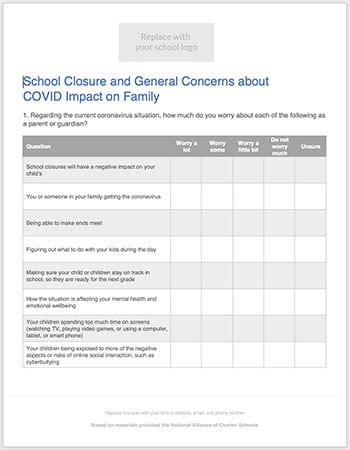As the Fall approaches, charter schools around the nation are scrambling to meet the recommendations set forth by the CDC and other bodies for a safe reopening. As we heard at NCSCv on July 23rd, some schools are deep in the middle of this effort, some schools are finding the process overwhelming.
While many entities have assembled resources to provide guidance to public schools in general and public charter schools specifically, we found the documentation provided by the National Alliance of Charter Schools and the California Department of Education to be most immediately helpful in navigating the many aspects of a safe reopening of our schools.
Over the course of the next few weeks, you will notice in our Instagram, Facebook and Twitter channels a series of infographics providing helpful tips. While these are not meant to be comprehensive, we hope you’ll find them useful in dispelling some of the confusion and overwhelm that such a massive undertaking can generate. These helpful tips for school reopening all stem from the following documents:
- STRONGER TOGETHER: A Guidebook for the Safe Reopening of California’s Public Schools
- A COMPENDIUM OF PUBLIC RESOURCES on the Safe Reopening of Charter Schools
We strongly encourage charter school leaders to review the above two documents in detail
Below we list additional resources we’ve found helpful in defining steps to take in ensuring readiness for students to returns to class – either as in-class learners or remote learners – are listed below. (We expect this to be an expanding list. Bookmark this page and come back to it regularly – we’ll be adding resources as we review them.)
Stakeholder Concerns
Gathering input from stakeholders accomplishes two important goals: It gives school leaders valuable data which will empower them to do better, AND it communicates to stakeholders that their concerns are being considered. While the first goal is widely understood, the importance of this second one cannot be overstated.
The compendium of resources gathered by the National Alliance for Public Charter Schools – skillfully assembled by Lisa S. Grover, PhD and Peri Lynn Turnbull, APR – lists surveys that have been conducted by national organizations. TNTP has a bank of survey questions, as well as a COVID-19 School Response Toolkit that may help charter school leaders collect ongoing feedback. Learning Heroes assembled a poll. EdChoice and the American Federation for Children have published survey results as well. Charter school leaders can dive into all of these resources to get steering data as they engage in the daunting task of reopening their schools.
Survey Template
Following the Charter Alliance’s lead, we’re making a set of survey questions available here for download. These stem from the National Parent Poll which Echelon Insights carried out for the National Parents Union (NPU). (You can see their survey results here)
We’re providing this survey template in MS Word. This enables charter school leadership to add their logos and contact info prior to sending these out. Simply download the MS Word template, replace with your own logo, branding and contact info and distribute to your stakeholders.
Financial Readiness
While the process of making schools safe for our students is of paramount importance, the survival and growth of your school in these uncertain times is just as vital for the uninterrupted educational experience of young minds.
With that in mind, we urge you to develop a strong strategic plan to weather state deferrals, as well as the added financial burden of providing a COVID-safe campus for your student body, teachers and support staff. Reach out to our financial experts if you need assistance with this. We’ve been through the Great Recession and have helped many charter schools survive and thrive in difficult financial climates. We’re here for you now. Call us at 503-227-2910.

